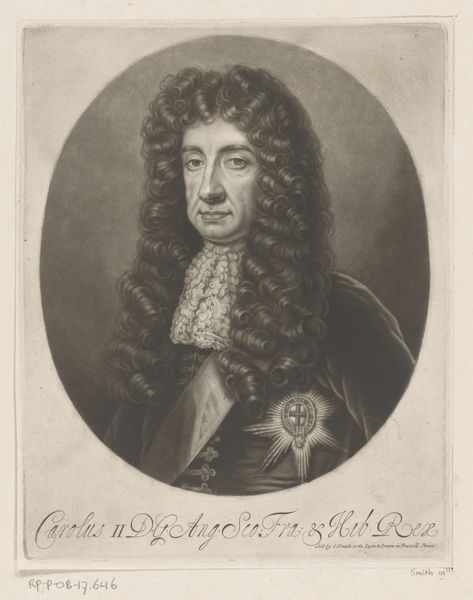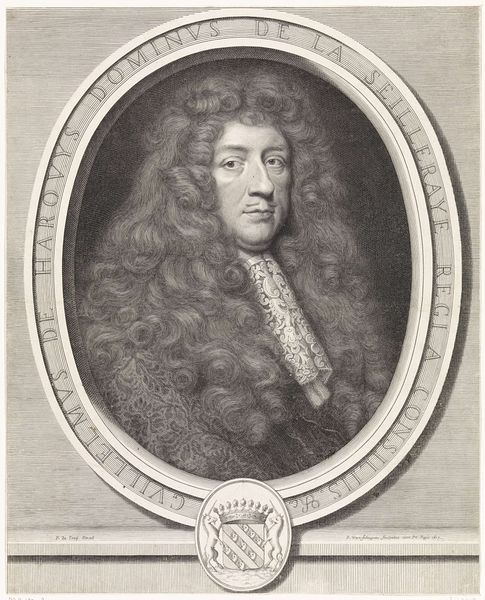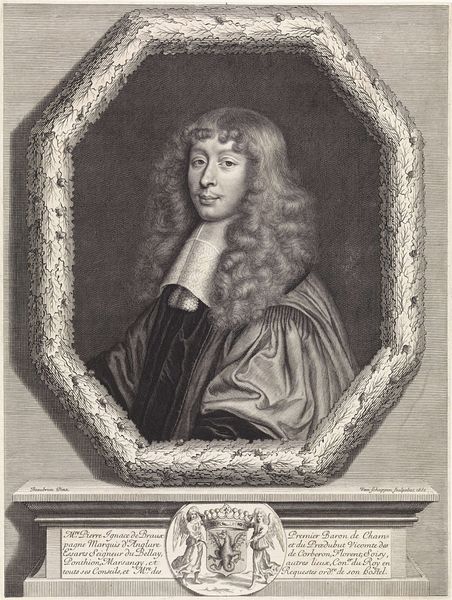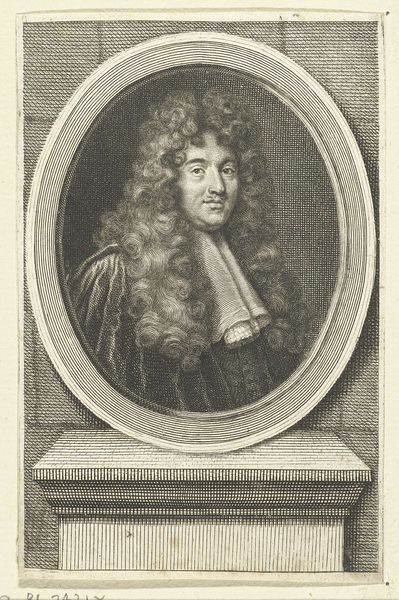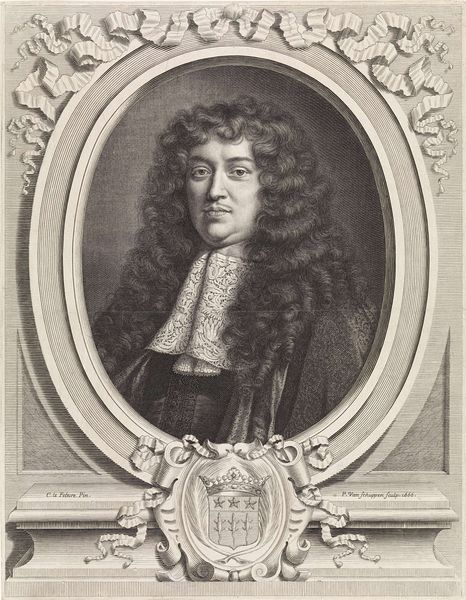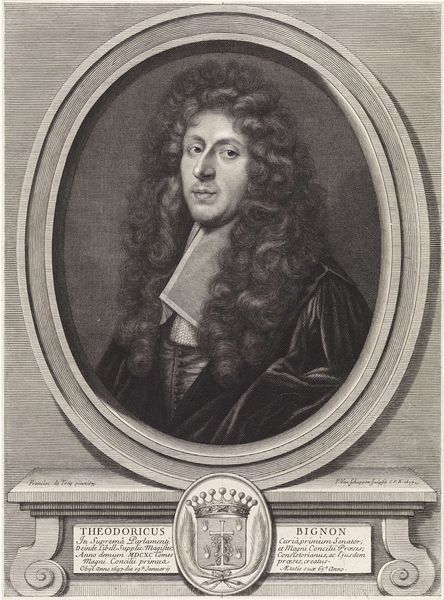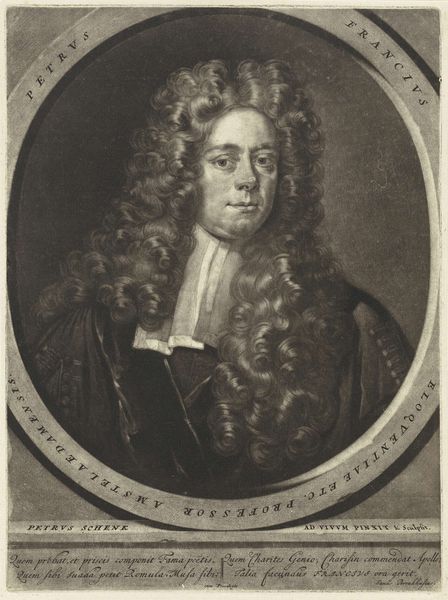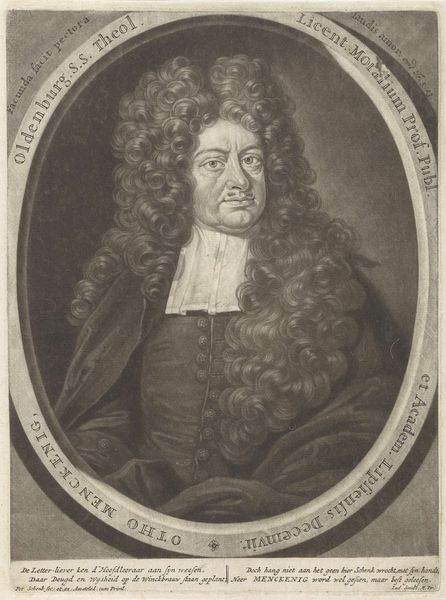
engraving
#
portrait
#
baroque
#
old engraving style
#
portrait reference
#
engraving
Dimensions: height 196 mm, width 140 mm
Copyright: Rijks Museum: Open Domain
Curator: Welcome. Today, we're examining an engraving from the Rijksmuseum's collection titled "Portret van Jacobus II van Engeland," dating approximately from 1662 to 1726. It is attributed to Gerard Valck, after Peter Lely. Editor: Immediately, I’m struck by the density of detail within a very confined space. The subject's wig alone commands so much visual attention; the intricate lace contrasts sharply with the dark background, guiding my gaze to his face. Curator: It’s fascinating how this work encapsulates the performance of power in that era. Think about the socio-political context. Jacobus II, later James II of England, was a controversial figure, a Catholic king in a predominantly Protestant nation. This portrait, likely commissioned to project an image of regal authority, carries the weight of religious and political tensions. The original painting by Lely became a crucial propaganda piece, reproduced widely as an engraving. Editor: Absolutely, and visually, the composition underscores that. The oval format functions as a sort of proscenium, framing James as a player on the world's stage. The chiaroscuro—the interplay of light and shadow—amplifies the drama. It's not just about representation; it's about constructing an image designed to elicit a specific emotional response, a sense of awe and respect. The lines defining his features appear clean and confident, as well, hinting at a ruler who makes decisions firmly. Curator: Precisely! The Baroque style itself was employed strategically. That elaborate wig, the rich fabric, weren't mere fashion statements. They symbolized wealth, status, and divine right. Think about the historical implications embedded in each carefully rendered detail. Even his slightly elevated gaze communicates a sense of superiority, reinforcing the hierarchical structures of the time. Editor: It’s amazing how the material limitations of engraving—those lines and textures—somehow amplify the portrait's forceful character, lending an almost sculptural presence. The texture of James' wig appears surprisingly dynamic in the engraving format. Curator: It invites a re-evaluation of representation and power—and it allows us to question those dynamics that linger today. Editor: It's clear that this engraving captures an image designed to endure, technically and ideologically.
Comments
No comments
Be the first to comment and join the conversation on the ultimate creative platform.
